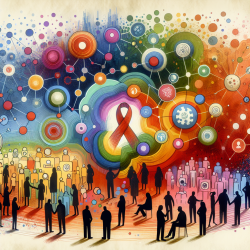Introduction
In the field of speech-language pathology and online therapy services, creating positive outcomes for children and communities is paramount. At TinyEYE, we believe in leveraging data-driven insights to enhance our interventions. A recent literature review titled "Community-based HIV/AIDS interventions to promote psychosocial well-being among people living with HIV/AIDS" sheds light on effective strategies that can be adapted to improve therapeutic practices.
Understanding Community-Based Interventions
The reviewed research highlights the significance of community-based interventions in promoting psychosocial well-being among people living with HIV/AIDS (PLWHA). These interventions encompass a variety of strategies, including coping skills, community involvement, and support group interventions. The findings emphasize the positive effects of these strategies, such as reducing stigma, loneliness, and anxiety while enhancing self-esteem, self-efficacy, and quality of life.
Key Takeaways for Practitioners
Practitioners can draw valuable insights from the research to enhance their skills and improve outcomes for children and communities. Here are some key takeaways:
- Embrace Community Involvement: Engaging communities in the intervention process fosters a sense of shared responsibility and support. This approach not only reduces stigma but also empowers individuals and families to take an active role in their well-being.
- Focus on Coping Skills: Developing coping skills is crucial for managing stress and enhancing resilience. Incorporating coping strategies into therapy sessions can help children and families navigate challenges effectively.
- Utilize Support Groups: Support groups provide a platform for individuals to share experiences and gain emotional support. Facilitating group interactions can lead to improved social connections and reduced feelings of isolation.
Encouraging Further Research
While the reviewed studies demonstrate positive outcomes, there is a need for further research to address program coverage, intensity, and methodological challenges. Practitioners are encouraged to explore these areas and contribute to the development of more rigorous interventions. By integrating contextual and institutional factors, future studies can enhance the effectiveness of community-based interventions.
Conclusion
Community-based interventions have the potential to transform the lives of individuals and communities affected by HIV/AIDS. By implementing data-driven strategies and fostering community involvement, practitioners can create meaningful outcomes for children and families. To read the original research paper, please follow this link: Community-based HIV/AIDS interventions to promote psychosocial well-being among people living with HIV/AIDS: a literature review.










